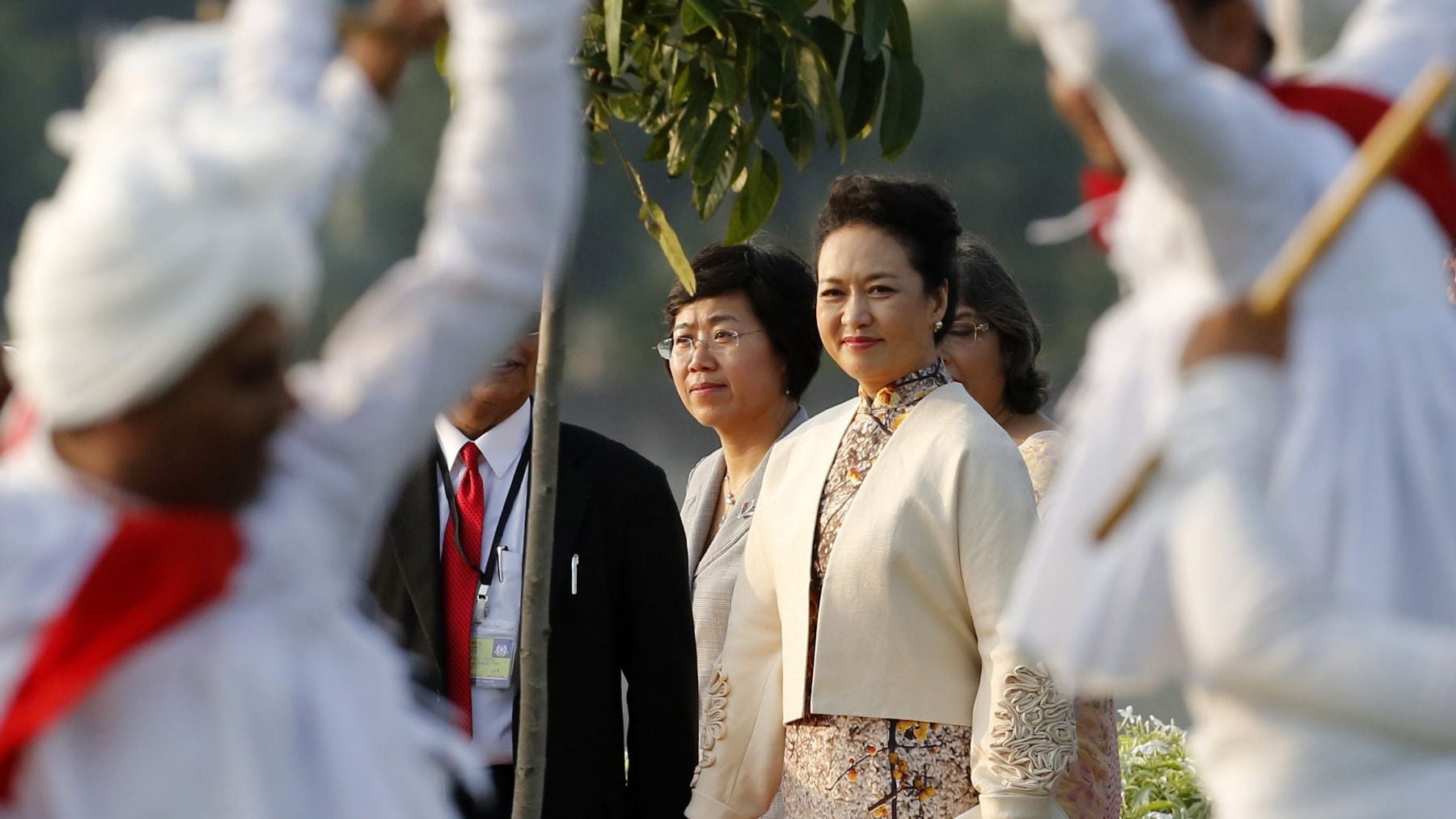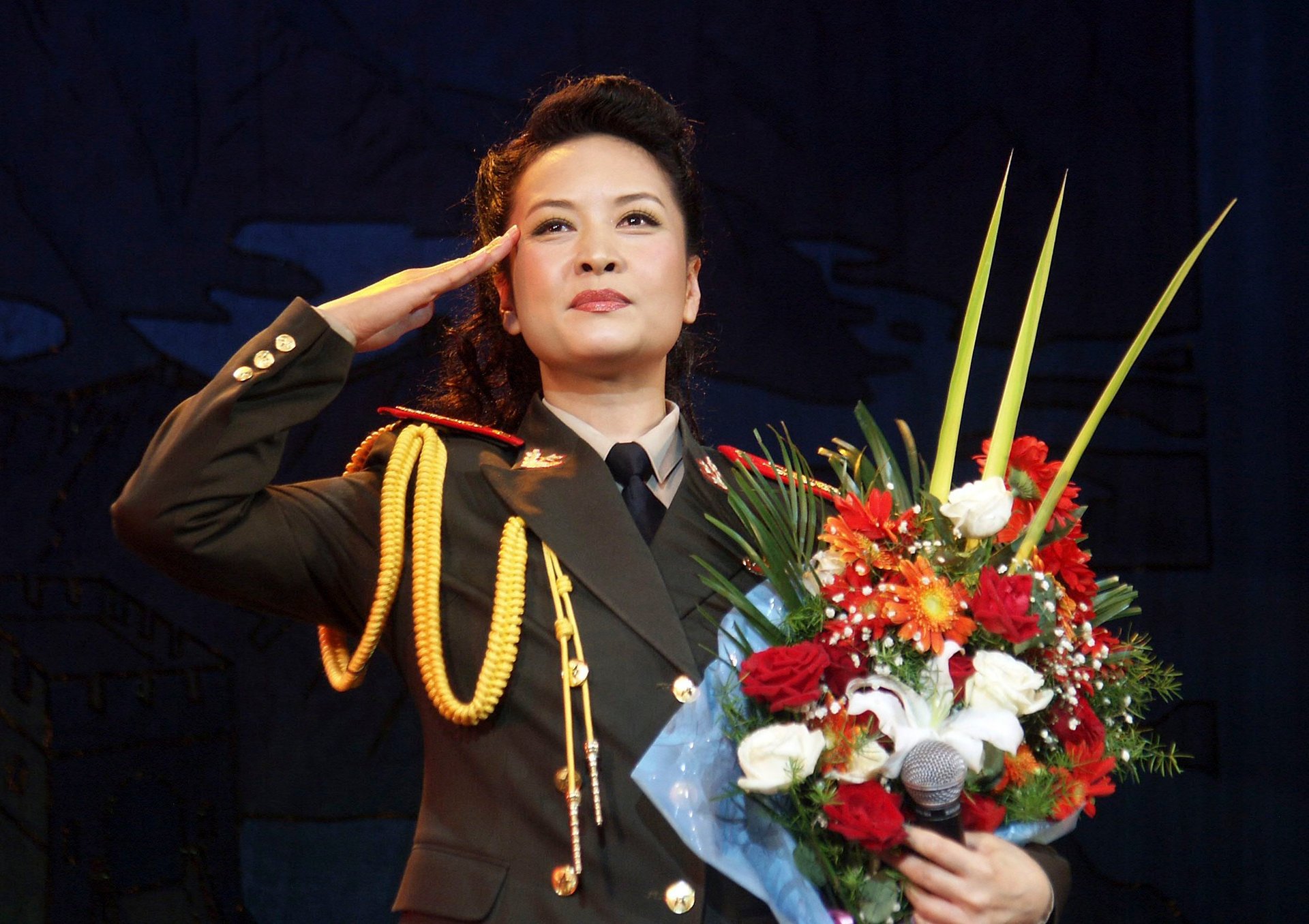This Chinese general is accompanying Xi Jinping to quietly conquer India
The major general stepped out of the Air China aircraft in Ahmedabad yesterday, and walked with Chinese president Xi Jinping into a black limousine.


The major general stepped out of the Air China aircraft in Ahmedabad yesterday, and walked with Chinese president Xi Jinping into a black limousine.
At the Hyatt hotel, where Indian prime minister Narendra Modi was waiting, Xi alighted first. The two leaders smiled broadly and shook hands.
Then, the general stepped forward to greet Modi, before deftly moving aside to let press photographers and cameramen get a view of the Indian prime minister and her husband, Xi.
But there was a time when Peng Liyuan, China’s first lady—and a honorary major general in the People’s Liberation Army—was the better-known spouse.
A folk singer, who for decades starred on state-run television shows with mostly propagandist renditions, Xi’s second wife had turned into a national celebrity far before the president himself rose to prominence.
That is why Peng’s talents were sought to be utilized to project Chinese “soft power” almost as soon as it became clear that her husband would become the president of the world’s second largest economy and the commander of the largest armed forces on the planet.
And in the year since Xi took office, Peng has emerged as perhaps the most visible first lady in Asia—a role that may well impact how the Chinese, as a nation, and its leadership in particular, are seen in India.

“The image of the Communist Party used to be very dull and the leaders behaved like robots as a part of the state machine with no personal charm at all,” a Chinese sociologist told the BBC last year. “Peng Liyuan is expected to bring something different to the leadership.”
Amid tensions on the disputed borders, the looming presence of China’s economy and limited mainstream cultural intermingling, much of that assessment of the Chinese brass could hold true for how Indians view the northern neighbor.
The Chinese are regarded rather unfavorably in the subcontinent. Consider these numbers from a March 2014 poll by the Pew Research Center:
A little more than a third of the public has a favorable view of China (35%), with only 13% holding a very favorable opinion. Four-in-ten (41%) have an unfavorable opinion of the People’s Republic, including 22% whose opinion is very unfavorable. Half of high-income Indians (51%) have a negative view.
More than a third (37%) of the Indian public considers China to be an enemy.
This is exactly what Peng’s charm and charisma could hope to change, along with some help from her husband, of course. An investment commitment of $100 billion, however unrealistic, will do much to alter China’s perception in India.
Already, the Indian press is fawning. The Times of India has called her an “encroacher of hearts,” who on Wednesday was “smiling through the ambush of cameras and security” in Ahmedabad. Elsewhere, there has been analysis of her fashion choices on the first day of the India visit. Peng, after all, is a style icon in China, often depending on the reclusive Chinese designer Ma Ke for her ensembles.
Beyond the photo-ops and social engagements, Peng may even meet women members of the Modi’s cabinet.
That’s not the sort of activity that first ladies typically engage in while in New Delhi. But Peng is hardly your average presidential spouse.